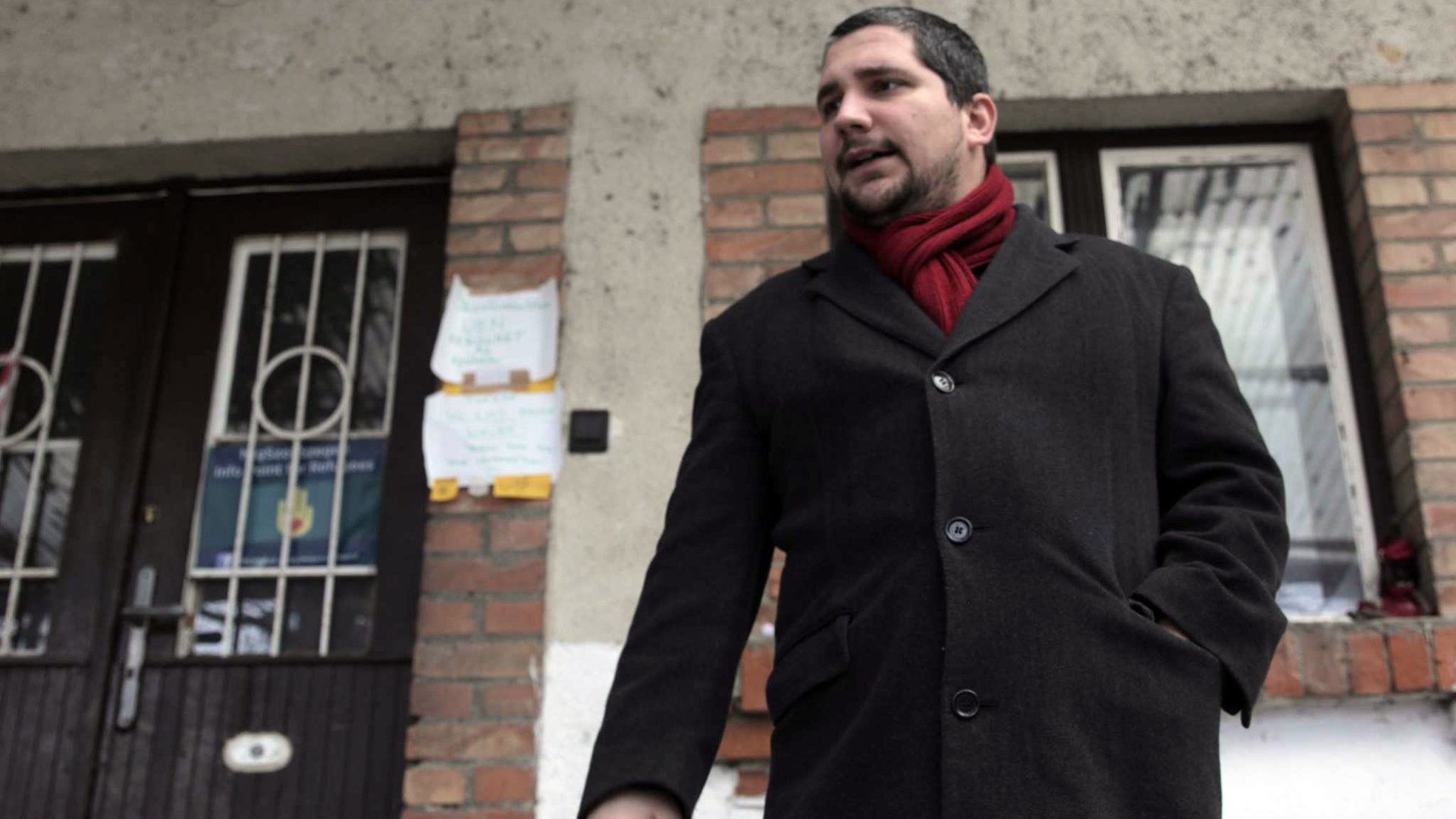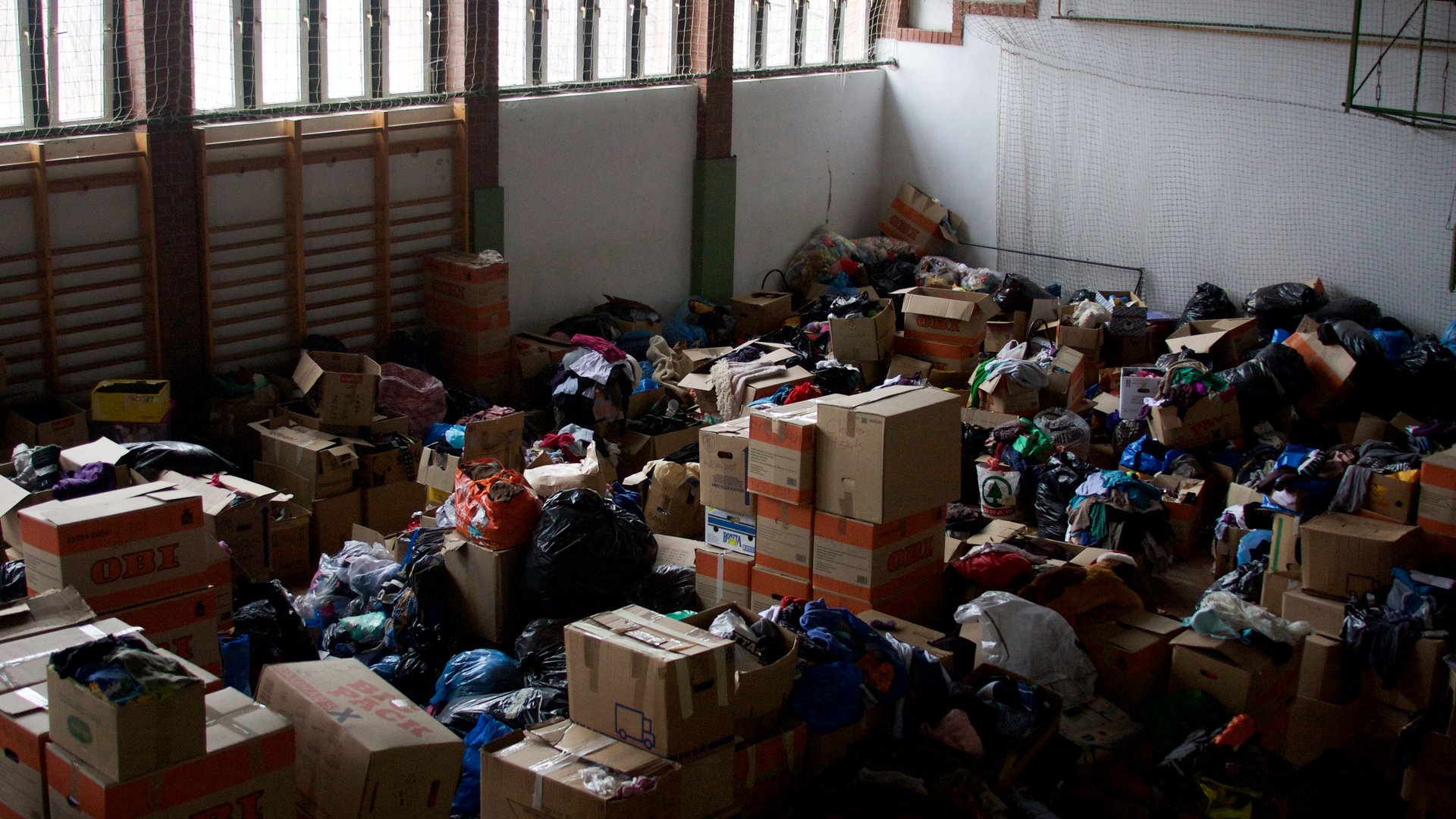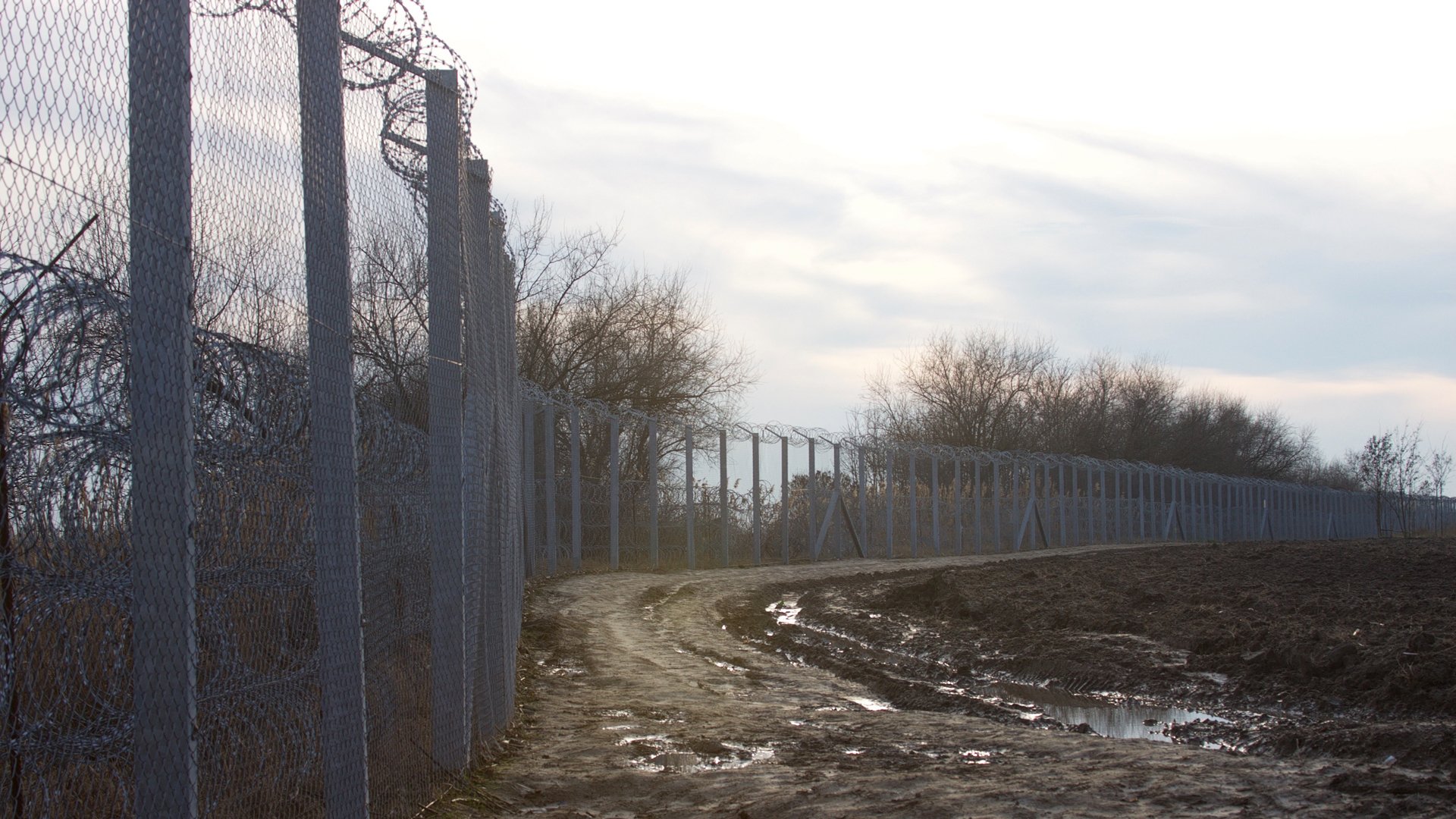

By Rian Bosse / Cronkite Borderlands Project
Published July 11, 2016
SZEGED, Hungary — The torrent of refugees passing through this city last summer has slowed to a trickle made up only of those who illegally breach a fence built to keep them out.
But the summer of 2015 continues to have a profound effect on local residents who were first-line responders to what has been called the greatest humanitarian crisis since World War II, in which tens of thousands of predominantly Muslim refugees, many fleeing war in Syria, traveled through Hungary en route to more prosperous European countries where they hoped to build new lives.
There are people like Balázs Szalai, a tech worker, who helped turn the city’s train station into a makeshift refugee camp. After long stretches of sleepless nights and countless volunteer hours, he is worn down by the hard work and political situation in his country.
Fellow organizer Márk Kékesi, a university professor, works with Szalai and other volunteers, helping distribute goods from a stock of donations — everything from food to clothing — in an old elementary school outside the busy city center.
Meanwhile, two young volunteers say their lives have changed; they remain enthralled by everything Arabic, the product of their contact with a culture that they had never known.
And others who watched with trepidation as their small communities were flooded with desperate people say they still live in fear of the organized crime that rose up to profit from human trafficking.

The sheer number of migrants crossing into Hungary from Serbia on the way to countries such as Austria and Germany stressed local courts and authorities, divided opinions in communities and, in some cases, served as a rallying point for volunteers who hoped to counter the anti-migrant rhetoric prevalent in the country.
There were more than 140,000 detentions between July and August 2015 for illegal crossings at the Serbian-Hungarian border, according to a report from the European Union border management agency Frontex. That number almost matches the population of Szeged, Hungary’s third-largest city, located nine miles from the border with Serbia.
To some in Szeged, the federal government’s response was mismanaged, creating nothing but confusion for migrants and local authorities.
“Every time I think about what I saw over the summer, it's like a Kafka story,” Szalai said. “It was a black hole, everyone afraid to say something.”
Hungarian Prime Minister Viktor Orbán’s popularity rose when he promised to defend Europe’s borders from what he described as a wave of foreign invaders who would threaten the country’s Christian values. Orbán’s critics believe his harsh rhetoric was politically calculated, a means to rile national fears and stay in power without focusing attention and resources toward important societal needs that could improve the economic situation for many in the country.
That left people in border cities including Szeged to provide humanitarian aid to migrants. Many embraced the chance to meet people from a different culture. Out of the effort to help, many volunteers established friendships and created small support communities that, in some way, defied the official government negativity.
“It gave us a new power, in some way,” said Tamás Jászay, a local resident who volunteered alongside Szalai and Kékesi at the train station in Szeged. “I think it gave hope for many of us.”
The hope continues through the volunteers of MigSzol Szeged, a grassroots organization that started in response to the migrants’ plight. At the abandoned school, donations are organized throughout the classrooms and gymnasium.
While the collection on this day in March is only about half of what it was in the summer of 2015, it remains impressive. Boxes of clothing stack to the windows in the gymnasium and piles of diapers fill what was once a German language classroom.
This role is nothing like last summer’s chaos that led Kékesi to plead with the city’s train station manager on one unusually cold night to keep the building’s door open and the heaters on for the migrants waiting for transportation and information.
From there, Kékesi and a growing number of volunteers turned the station into ground zero for refugees needing information, food and health care. As word got out about what MigSzol was doing, hundreds started signing up on the group’s Facebook page to help.
Donations began coming in from around the country and Europe. Local volunteers turned out in droves. The enormous show of support came in the midst of an anti-migrant campaign by Orbán’s government.
“I was shocked that so many people came to help,” Kekesi said.

After the government erected its fence along the border with Serbia and passed strict laws against crossing into the country illegally, however, the number migrants passing through Szeged dropped dramatically. But Kékesi and his fellow MigSzol Szeged volunteers felt there was more to do; they continue to work to help change public discourse dominated by Orbán’s government.
“From the very first moment, we tried to show that Hungary has another face,” Kékesi said. "We had to show that Hungary was not a country of 10 million xenophobes."
Today, a small number of volunteers both young and old pass through the elementary school organizing donations and preparing shipments sent to aid groups and charities around Hungary and Europe. Kékesi, Szalai and others still routinely cross into Serbia when they hear camps are filling with migrants again, though there have been fewer groups as countries in March closed the Balkan route used by thousands of refugees entering Europe.
What’s left behind — the fence and the political fallout of the country’s efforts leading Europe’s anti-refugee movement — still wears on the minds of these volunteers who dedicated hours to provide a positive response to the crisis.
“Even if [people] agreed with Orbán in other areas, this hate campaign his government started against the refugees for short-term political interests, the long-term consequences of these actions are unpredictable,” Kékesi said. “They agreed … that it created hatred and that this would never lead to any kind of solution, it would never lead to the situation getting better. It’s just creating hatred. The refugees will be gone one day, but the hatred will still be here.”
To many, the recently erected fence is a reminder of Hungary’s history that is filled with political strife – one of invasion, of war, of communism. The fence is yet another barrier to overcome.
“People live here on both sides of the border. We have relatives, friends, lovers, whatever on other side of the border in northern Serbia and this was kind of like a philosophical wall,” Kékesi said. “This fence is not a good message. The indirect consequences of the fence are not yet predictable.”
Yet 14 miles away, in the Serbian border town of Horgoš, there are many who say the fence helped bring an uneasy truce to what became a battle zone. This village — where some speak the Hungarian language and a few shops gladly accept payments in brightly colored forints — was overrun at the peak of the crisis.
As tens of thousands of migrants made their way into Hungary and on to Szeged, many passed through Horgoš, whose some 6,000 residents were ill-equipped to deal with the surge of desperate people hoping for a chance to migrate to Europe’s wealthier countries.
For the refugees, the fence was another barrier to a life away from violent conflict. In September, that frustration turned to violence as refugees clashed with Hungarian riot police outside the normally sleepy town. Even humanitarian aid groups were overwhelmed trying to pacify the situation.
Now months after the migrants moved on, detoured by Hungary’s fence and strict laws, seedy remnants of the summer of 2015 remain in the village. Human traffickers, who profited greatly during the great increase of migrants during the summer, still take advantage of desperate marks, much like the smugglers on the Arizona-Mexico border.
Ordinary citizens say they are tired of the corruption the organized crime has brought to their local government. Some in Horgoš fear retaliation if they speak out against traffickers. If it was a flood of migrants before, it is a flood of crime that continues to plague their small town.
“Before the European immigrant crisis, this town is a no-name town,” said Aron S., a Horgoš resident and student who would only provide his first name and last initial out of fear of traffickers. “After, the human trafficking business is the greatest business in this town. The greatest.”
Residents say they’ve witnessed traffickers take advantage of migrants, at times bringing violence to their front doorsteps. Traffickers sell migrants poorly made passports that, in the end, offer no help in passing into Hungary. Some sell wire cutters to desperate refugees at prices marked up several times. Others simply rob migrants of all they have assaulting them once they’ve reached the wooded rural area near the fence.
Government officials justify building the fence at the Serbian border by saying Hungary is obligated to protect the European Union’s external borders. Other countries have gradually and sometimes grudgingly followed Hungary’s lead, threatening the decades-old, passport-free travel in the 26 countries in Europe’s Schengen Zone.
To these Hungarian officials and their supporters, the fence is currently a necessary evil.
“It’s a big question for Europe because the purpose of Schengen was to protect the external borders of the European Union, whereas we will do away with the internal borders. This is needed to facilitate the free movement of people, trade, business compared to this,” said László Tróscányi, Hungary’s justice minister. “When you have certain member states erecting fences in between, that is, on the one hand, lack of confidence for the other and also the utter sense of being unable to do anything — a last resort. I fully agree with the idea of having to protect the external borders of the European Union.”

Sealing off the border with Serbia provided a dramatic drop in detentions for illegal crossings into Hungary. On September 15, 2015, 9,000 detentions were recorded on the border, according to Frontex. The next day, that number dropped to 410 as migrants moved west towards open borders in Croatia. In the last 10 days of September, detentions fell to an average of under 182 a day.
Lower numbers allow a more controlled, more manageable response to the migration that some residents in Horgoš say is acceptable.
“This migration is very similar to drinking. If you drank little, you feel you are very proud, very great man,” Aron S. said. “If you called the very small group of immigrants (into) your country, if these immigrants accept the European law, the European lifestyle, this assimilation converts and grows GDP. But if you drink too much, you feel very crazy, very silly, and not enjoying more.”
Back in Sgezed, growing acceptance of the Hungarian anti-refugee attitude in other European countries continues to weigh on Szalai as he, Kékesi and the MigSzol group work with the United Nations Refugee Agency helping migrants in the area.
While the work has gotten easier since last summer, Szalai, unsettled by the political response and hampered by a lack of career opportunities in Szeged, has considered eventually leaving the country to pursue personal goals elsewhere in Europe. And he said he was inspired by watching people struggling for better lives while remaining positive despite the challenges.
“I would lie if I said the political situation is not part of it, but it’s a small part,” Szalai said. “I met with people who go through the sea, the whole Balkan, so they could choose a different country to live. So why do I stay here if somebody else who has less than me could do this?”

That inspiration reached far into the community of volunteers, especially with some of the group’s youngest members.
As a college town, Szeged is fairly multicultural for a Hungarian city, with a number of Middle Eastern students at the University of Szeged. Even with that exposure, the influx of people brought volunteers with the MigSzol group face to face with a foreign culture they might not have experienced so thoroughly without the migrants.
Sitting together in their favorite Arabic restaurant tearing pita bread and enjoying hummus in March, Alíz Sahin and Zsófia Narancsik still get emotional looking back on their experience last summer. They keep pictures on their phones of their days playing with children and meeting families. They’re still in touch with some of those families on a daily basis, they say. They have new interest in Arabic food, music and movies thanks to the people they helped and befriended.
“I loved it,” Narancsik said through Sahin’s translation. “I was touched by many of the people.”
For Narancsik, the decision to help last summer was easy. As a student studying social work, she felt compelled to offer help through the group. It reinforced her studies and the work she hopes to do in the future.
But they continue to push back against anti-immigrant sentiment they say is still alive in their city and country.
Sahin said while the experience has enriched their lives, it has also raised doubts about their hopes for a more inclusive future for Hungary.
“I think we all changed. For me, I became a little bit (of a) pessimist because of a lot of crazy people. We saw how they were treating refugees,” Sahin said. “They separated families in front of our eyes, so, yes, I think I changed. I think we all started to care more about the people around us. I mean everyone, not just the refugees.”
Buffett student projects include: Nicaragua: Channeling the Future | Chiapas: State of Revolution | Two Borders | Puerto Rico: Unsettled Territory | Stateless in the Dominican Republic | South Africa: At the Crossroads of Hate and Hope | South Africa Documentary | Borderlands Photo Essays | Divided Families (PDF) | Divided Families Documentary | Children of the Borderlands | South Africa Project
Cronkite News is the news division of Arizona PBS. The daily news products are produced by the Walter Cronkite School of Journalism and Mass Communication at Arizona State University.